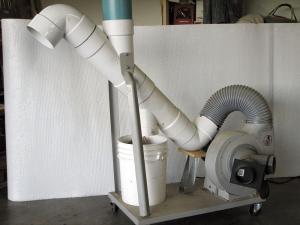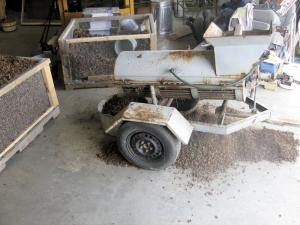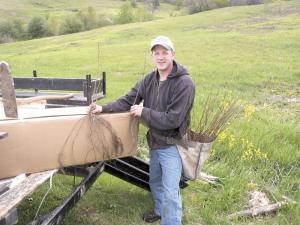He Makes Money After "Going Nuts"
Mark Shepard, Forest Ag Enterprises, thinks more farmers should "go nuts" and consider raising nuts as a cash crop. On his 100-acre farm in southwest Wisconsin, he grows and harvests all kinds of nuts û including some exotic varieties that shouldn't be able to survive his cold winters. When he isn't planting and harvesting nut crops, he's experimenting and researching ways to better handle the crops.
"Why plant corn and soybeans every year when you can plant trees once and harvest nut crops for generations?" he asks.
Shepard has filled his farm with as many perennial crops as he can get to grow in his weather and soil conditions. In addition to nuts, his apple trees supply fresh fruit and cider for local markets, and he's in the final stage of licensing for on-farm hard cider fermentation and marketing.
Pears, cherries and berries of all sorts are also grown on Shepard's farm. However, it's the nuts that he feels have the most potential. He's one of a select group of self-supported nut crop researchers. Unlike major row crops, there isn't government agency or university support for the kind of research he and others do.
"There is very little breeding being done to develop suitable nut varieties for northern climates," he says. "I collaborate with people doing breeding work in Saskatchewan, Alaska, Maine, New York, Ohio and Iowa."
Currently he's working on hazelnuts for biodiesel (which he uses for all of his powered farm equipment) as well as food. He also is growing and selecting varieties of pine nuts, Japanese walnuts (called heartnuts) and pecans that will survive Wisconsin winters.
Shepard is involved in efforts to revive the American chestnut and butternuts, by working to identify disease resistant strains.
He's crossing butternuts with Japanese walnuts to produce a hybrid called butterhearts. He is also selecting for hardy pecans, English walnuts and pine nuts.
The process he follows is simple. "You plant a bazillion seeds and keep the ones that meet your criteria," says Shepard. "You may keep one or two out of 4,000 or 5,000. That's where you start your breeding program."
Every generation, he selects for better producing trees. Meanwhile, he harvests some of his nuts for the nutmeats, which he sells fresh, roasted or chocolate-coated. Nuts are also used for additional research, as well as for sale as seed or to plant himself to produce the seedlings that he sells. In addition, he consults with anyone who wants to plant nut trees and does custom planting of seedlings and seed nuts.
Shepard is also developing equipment to make harvesting and processing easier. He has a husker and cleaner for hazelnuts, as well as a cracker, and he's working on a sorting and sizing table.
"I can put 2,000 lbs. of nuts through the husker an hour," he says. "I plan to combine the husker with screening, sorting and cracking in one machine. I expect it will be the size of a small van."
The husker is a modified walnut huller. It has a long cylinder with rebar for the bottom side and a hopper at one end. As nuts in nut clusters feed into the husker, a rotating brush rubs them against the rebar. Trash falls to the floor, while clean nuts exit to a basket at the end of the husker.
"The trick is to keep the nuts between the brush and the bars," says Shepard.
After running hazelnuts through the husker, they are often run through an aspirator to remove more trash. Constructed from pvc pipe with a high-speed fan, it allows nuts to pass through the air stream while trash is blown out the exhaust pipe.
The cracker alone is the size of a refrigerator or soda machine. It can process around 125 lbs. of nuts an hour. Shepard didn't want to give too many details because he has applied for a patent on it.
"It was developed for hazelnuts, but so far it has cracked every nut I've run through it, from pine nuts to walnuts and pecans, as well as ones I don't grow like pistachios and almonds."
Shepard is still in the process of establishing prices for his nut processing equipment. He does have prices on his seedlings and seed nuts for broadcast planting.
"Prices vary depending on the number and size of the seedlings, which I sell by bundles of 10 to 25 seedlings," says Shepard. "Generally they run from $3.50 to $8 per plant. If you buy a thousand or more, you get a lower price. Nuts for seeding run $3/lb."
Contact: FARM SHOW Followup, Forest Agriculture ENterprises, PO Box 24, Viola, Wis. 54664 (ph 608 627-8733; forestag@mwt.net; www.forestag.com).

Click here to download page story appeared in.
Click here to read entire issue
He Makes Money After Going Nuts CROPS New Crops Mark Shepard Forest Ag Enterprises thinks more farmers should go nuts and consider raising nuts as a cash crop On his 100-acre farm in southwest Wisconsin he grows and harvests all kinds of nuts û including some exotic varieties that shouldn t be able to survive his cold winters When he isn t planting and harvesting nut crops he s experimenting and researching ways to better handle the crops
Why plant corn and soybeans every year when you can plant trees once and harvest nut crops for generations? he asks
Shepard has filled his farm with as many perennial crops as he can get to grow in his weather and soil conditions In addition to nuts his apple trees supply fresh fruit and cider for local markets and he s in the final stage of licensing for on-farm hard cider fermentation and marketing
Pears cherries and berries of all sorts are also grown on Shepard s farm However it s the nuts that he feels have the most potential He s one of a select group of self-supported nut crop researchers Unlike major row crops there isn t government agency or university support for the kind of research he and others do
There is very little breeding being done to develop suitable nut varieties for northern climates he says I collaborate with people doing breeding work in Saskatchewan Alaska Maine New York Ohio and Iowa
Currently he s working on hazelnuts for biodiesel which he uses for all of his powered farm equipment as well as food He also is growing and selecting varieties of pine nuts Japanese walnuts called heartnuts and pecans that will survive Wisconsin winters
Shepard is involved in efforts to revive the American chestnut and butternuts by working to identify disease resistant strains
He s crossing butternuts with Japanese walnuts to produce a hybrid called butterhearts He is also selecting for hardy pecans English walnuts and pine nuts
The process he follows is simple You plant a bazillion seeds and keep the ones that meet your criteria says Shepard You may keep one or two out of 4 000 or 5 000 That s where you start your breeding program
Every generation he selects for better producing trees Meanwhile he harvests some of his nuts for the nutmeats which he sells fresh roasted or chocolate-coated Nuts are also used for additional research as well as for sale as seed or to plant himself to produce the seedlings that he sells In addition he consults with anyone who wants to plant nut trees and does custom planting of seedlings and seed nuts
Shepard is also developing equipment to make harvesting and processing easier He has a husker and cleaner for hazelnuts as well as a cracker and he s working on a sorting and sizing table
I can put 2 000 lbs of nuts through the husker an hour he says I plan to combine the husker with screening sorting and cracking in one machine I expect it will be the size of a small van
The husker is a modified walnut huller It has a long cylinder with rebar for the bottom side and a hopper at one end As nuts in nut clusters feed into the husker a rotating brush rubs them against the rebar Trash falls to the floor while clean nuts exit to a basket at the end of the husker
The trick is to keep the nuts between the brush and the bars says Shepard
After running hazelnuts through the husker they are often run through an aspirator to remove more trash Constructed from pvc pipe with a high-speed fan it allows nuts to pass through the air stream while trash is blown out the exhaust pipe
The cracker alone is the size of a refrigerator or soda machine It can process around 125 lbs of nuts an hour Shepard didn t want to give too many details because he has applied for a patent on it
It was developed for hazelnuts but so far it has cracked every nut I ve run through it from pine nuts to walnuts and pecans as well as ones I don t grow like pistachios and almonds
Shepard is still in the process of establishing prices for his nut processing equipment He does have prices on his seedlings and seed nuts for broadcast planting Prices vary depending on the number and size of the seedlings which I sell by bundles of 10 to 25 seedlings says Shepard Generally they run from $3 50 to $8 per plant If you buy a thousand or more you get a lower price Nuts for seeding run $3/lb Contact: FARM SHOW Followup Forest Agriculture ENterprises PO Box 24 Viola Wis 54664 ph 608 627-8733; forestag@mwt net; www forestag com
To read the rest of this story, download this issue below or click
here to register with your account number.









